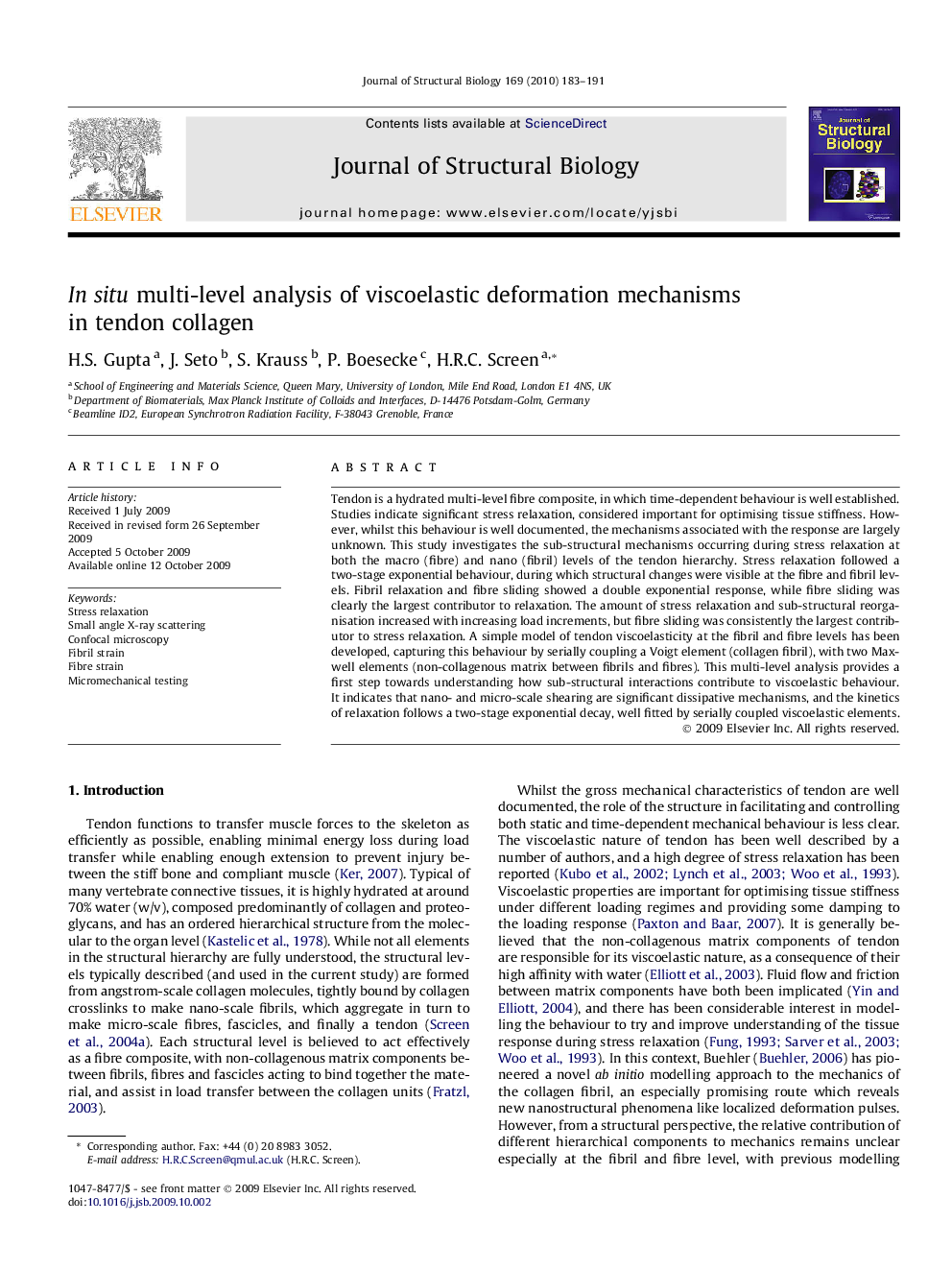| Article ID | Journal | Published Year | Pages | File Type |
|---|---|---|---|---|
| 2828937 | Journal of Structural Biology | 2010 | 9 Pages |
Tendon is a hydrated multi-level fibre composite, in which time-dependent behaviour is well established. Studies indicate significant stress relaxation, considered important for optimising tissue stiffness. However, whilst this behaviour is well documented, the mechanisms associated with the response are largely unknown. This study investigates the sub-structural mechanisms occurring during stress relaxation at both the macro (fibre) and nano (fibril) levels of the tendon hierarchy. Stress relaxation followed a two-stage exponential behaviour, during which structural changes were visible at the fibre and fibril levels. Fibril relaxation and fibre sliding showed a double exponential response, while fibre sliding was clearly the largest contributor to relaxation. The amount of stress relaxation and sub-structural reorganisation increased with increasing load increments, but fibre sliding was consistently the largest contributor to stress relaxation. A simple model of tendon viscoelasticity at the fibril and fibre levels has been developed, capturing this behaviour by serially coupling a Voigt element (collagen fibril), with two Maxwell elements (non-collagenous matrix between fibrils and fibres). This multi-level analysis provides a first step towards understanding how sub-structural interactions contribute to viscoelastic behaviour. It indicates that nano- and micro-scale shearing are significant dissipative mechanisms, and the kinetics of relaxation follows a two-stage exponential decay, well fitted by serially coupled viscoelastic elements.
